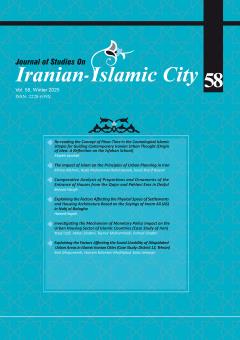-
-
-
Open Access Article
1 - Religious Spaces in the Layout and Fabric of Zoroastrian Cities; Case Study: Yazd
hassan karimian Fatemeh karimi -
Open Access Article
2 - Codification of a theoretical model for the production of spiritual-led urban space in an Iranian-Islamic city, Based on grounded theory method (case study: the central part of Mashhad)
farzaneh madani mojtaba Rafieian afsoon mahdavi Fatemeh Mohammadniai Gharaei -
Open Access Article
3 - Explaining the Role of Sidewalks in Increasing the Morale of Citizens to Reduce Crimes in Urban Space (Case Study: Aligudarz County)
محمد بهزادپور hamid bazrphach mohammadreza mousavi
List of Articles فضای شهری
-
The rights to this website are owned by the Raimag Press Management System.
Copyright © 2017-2025


